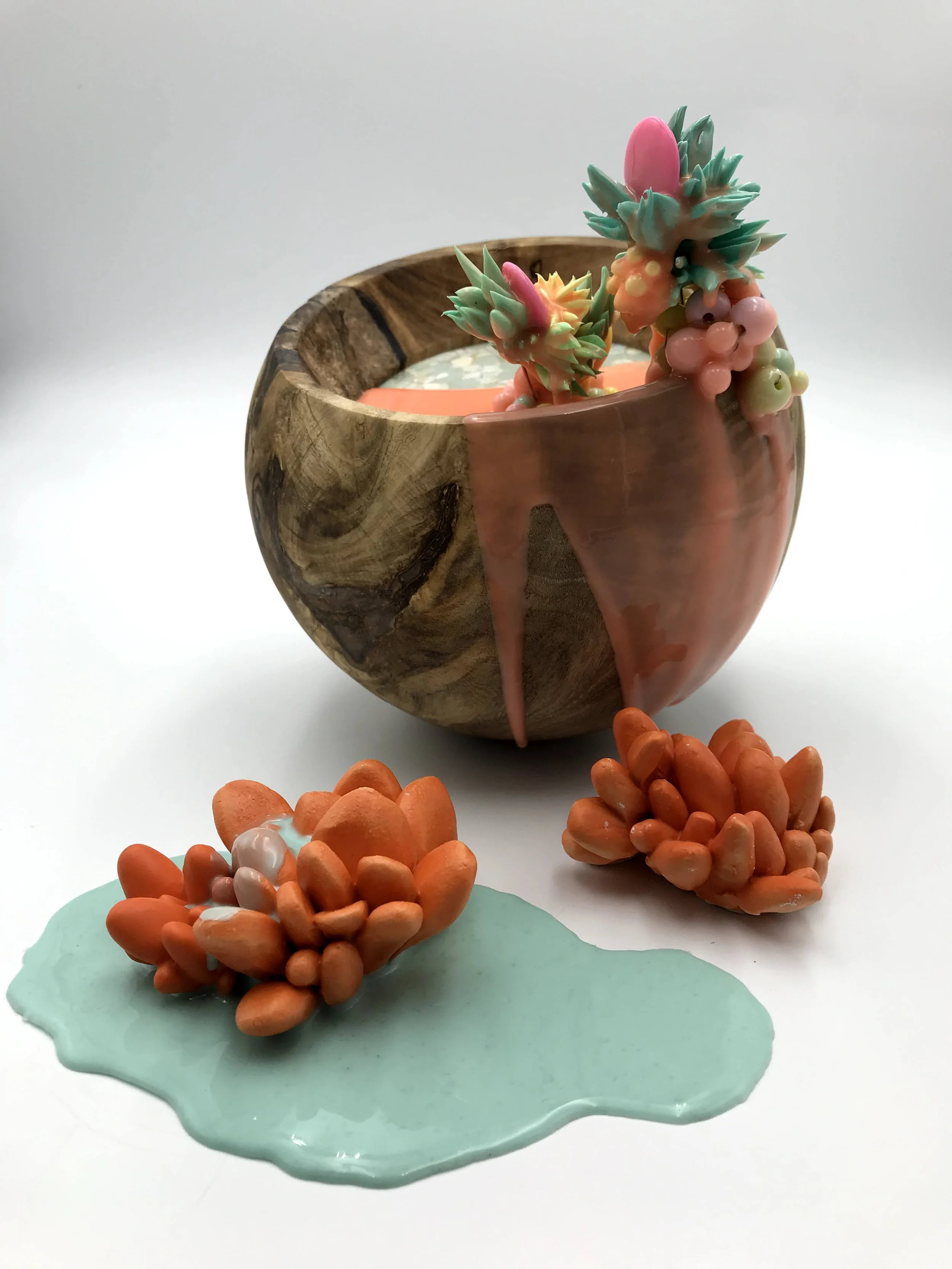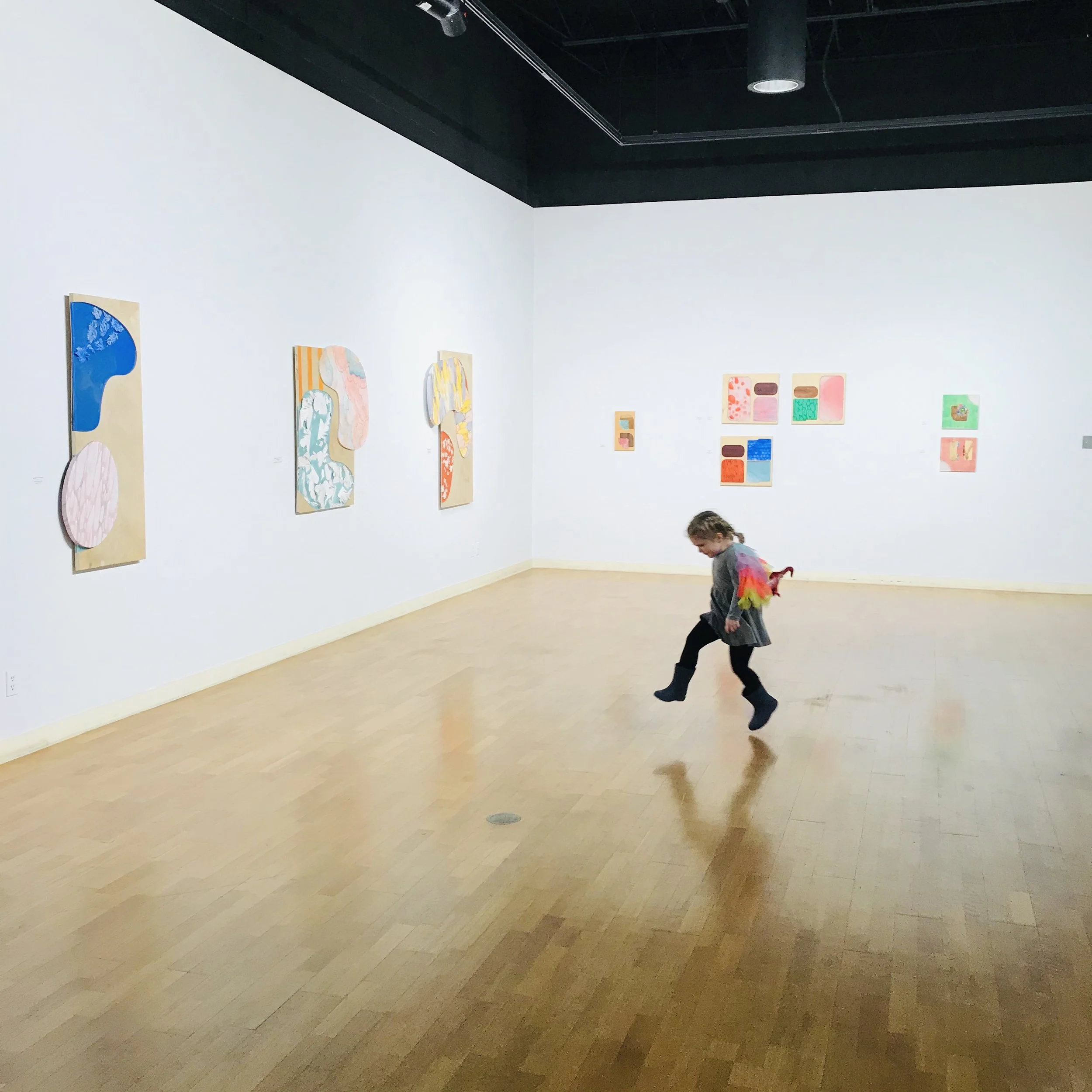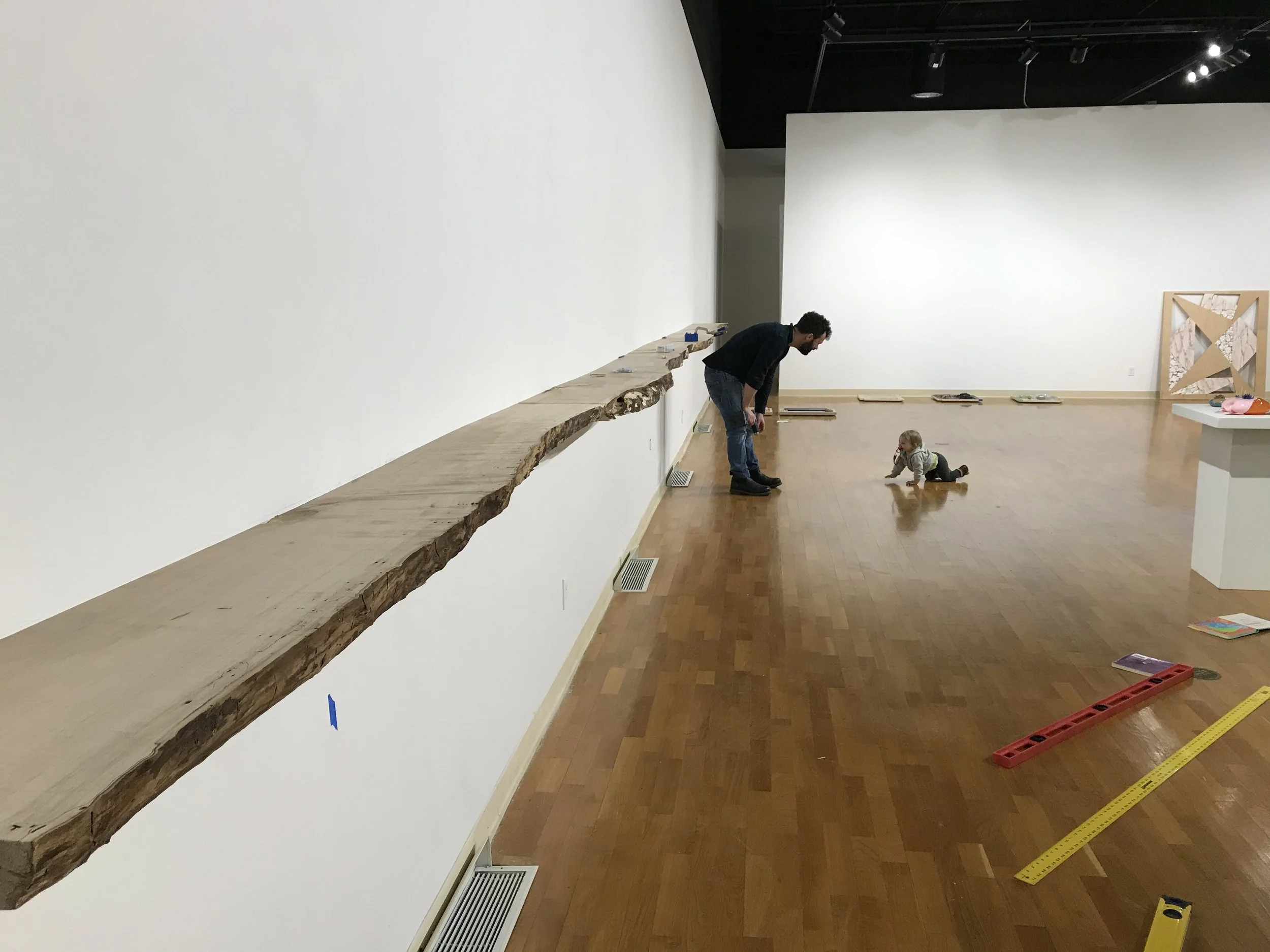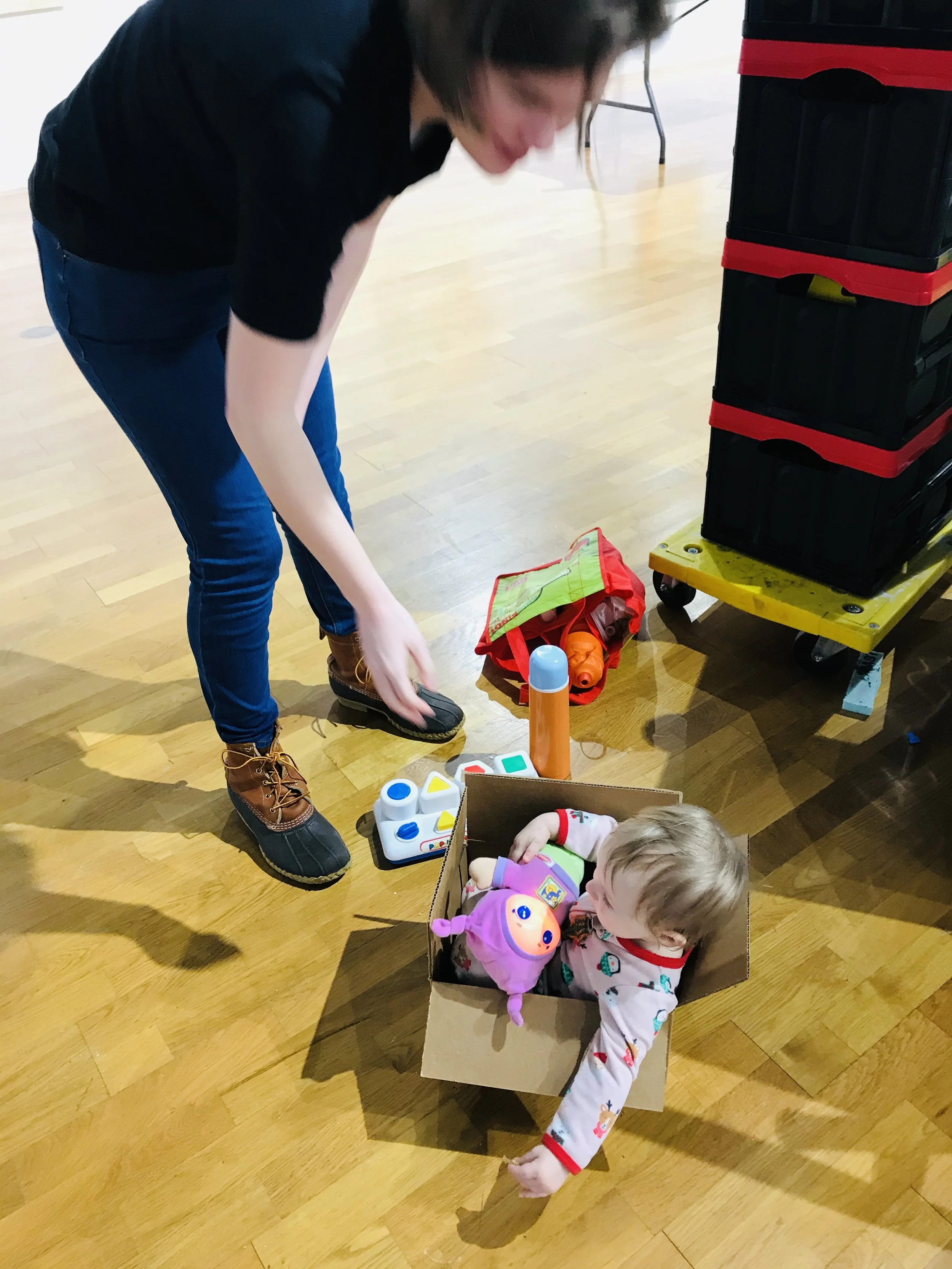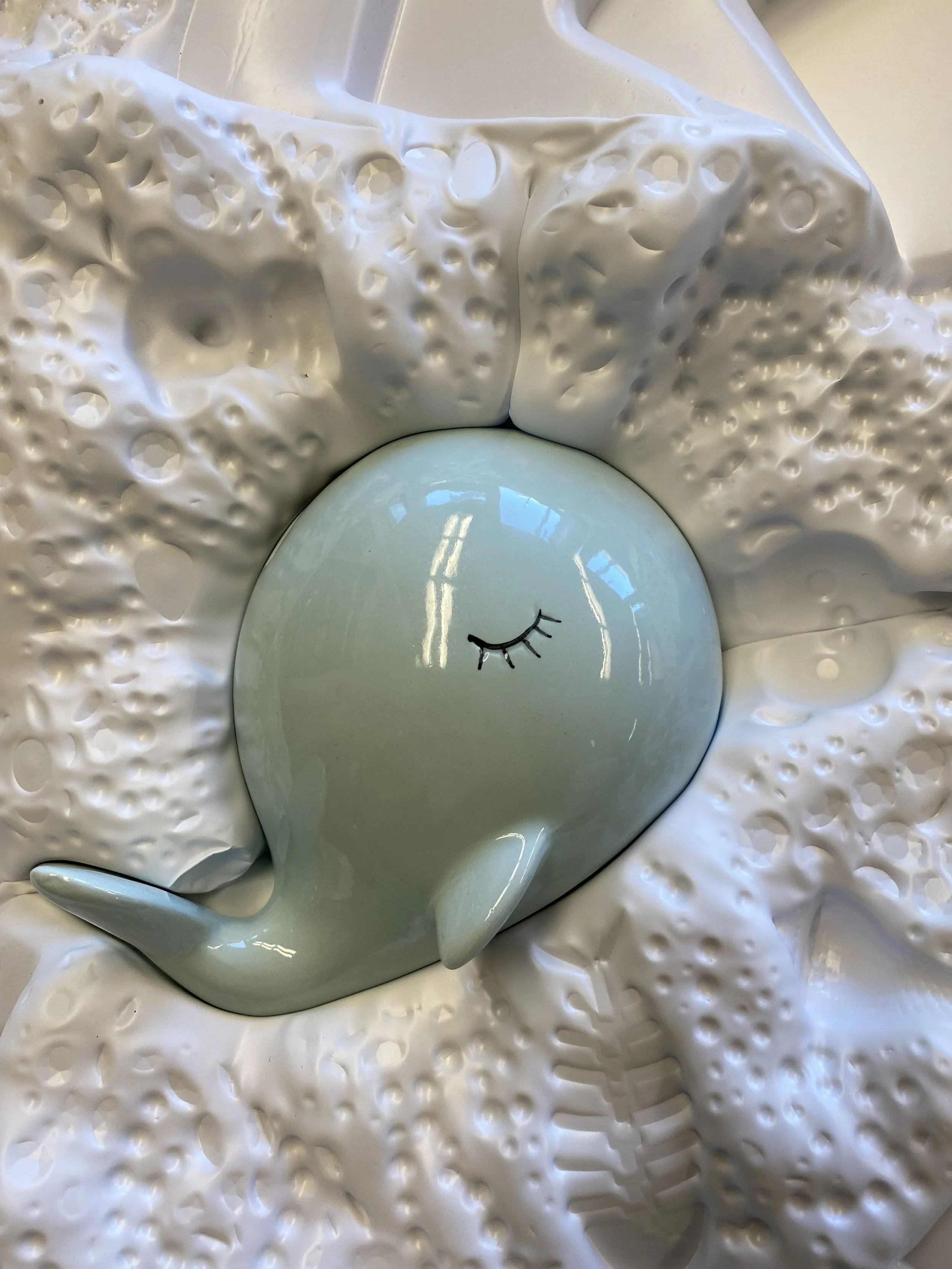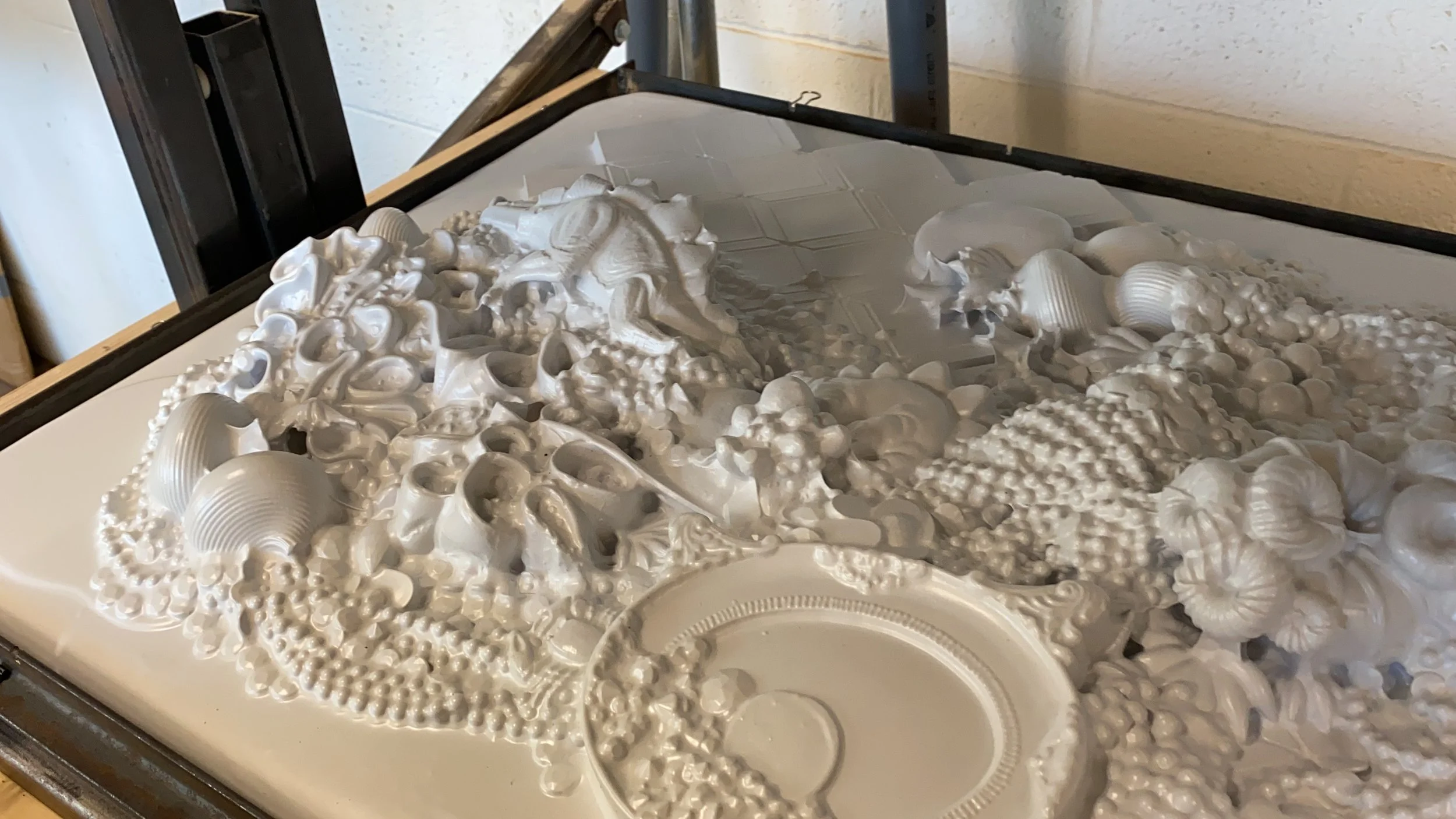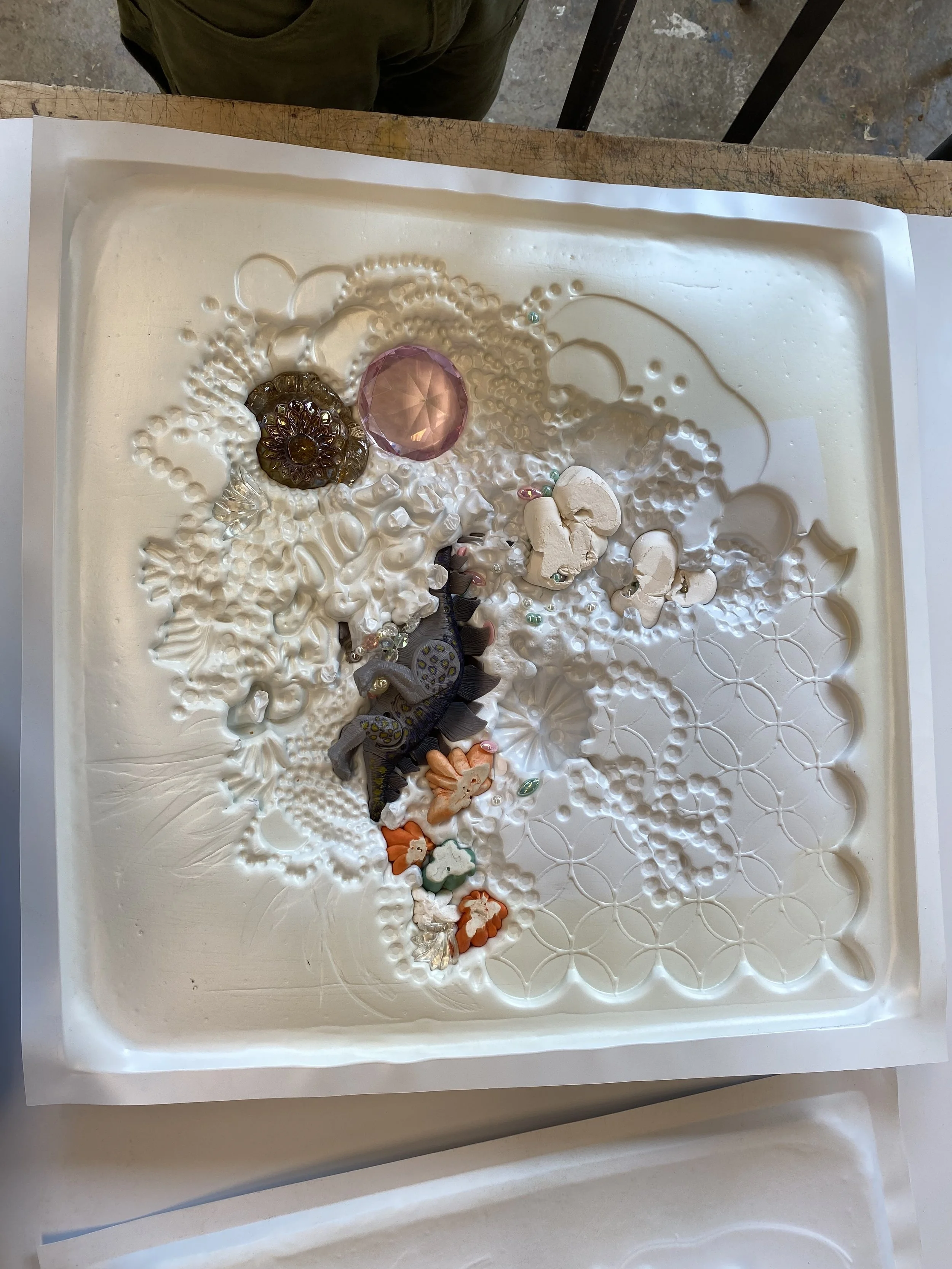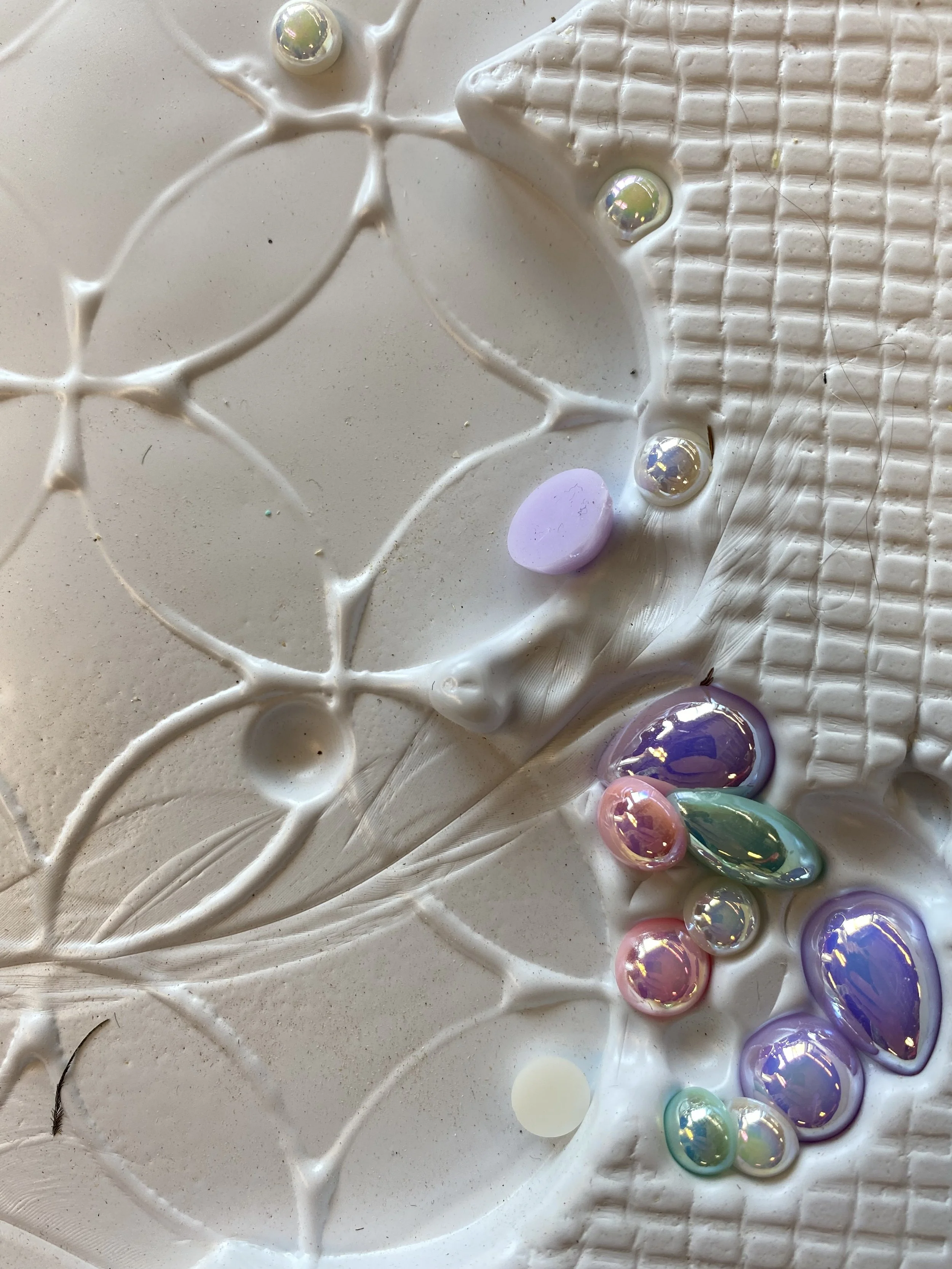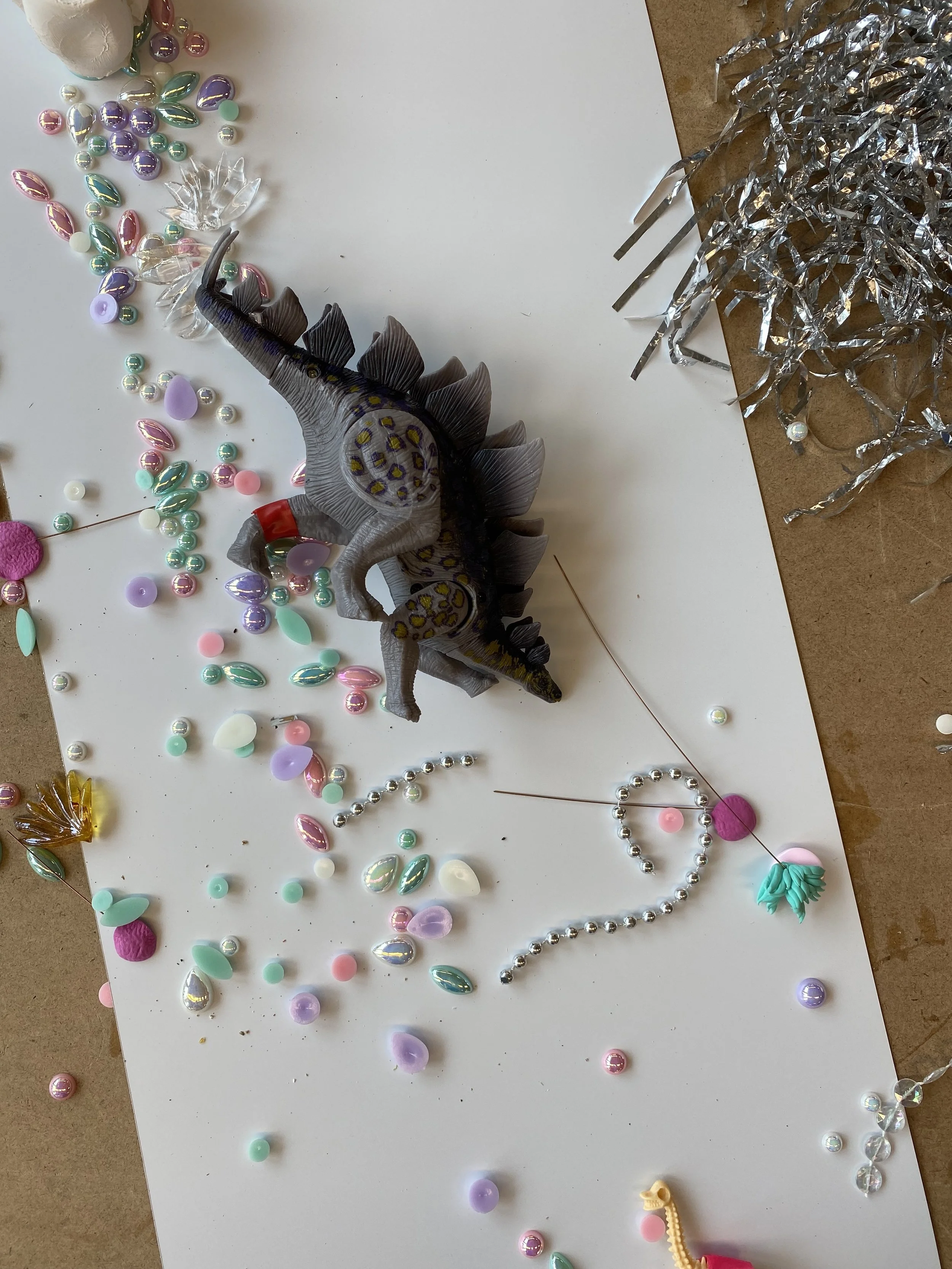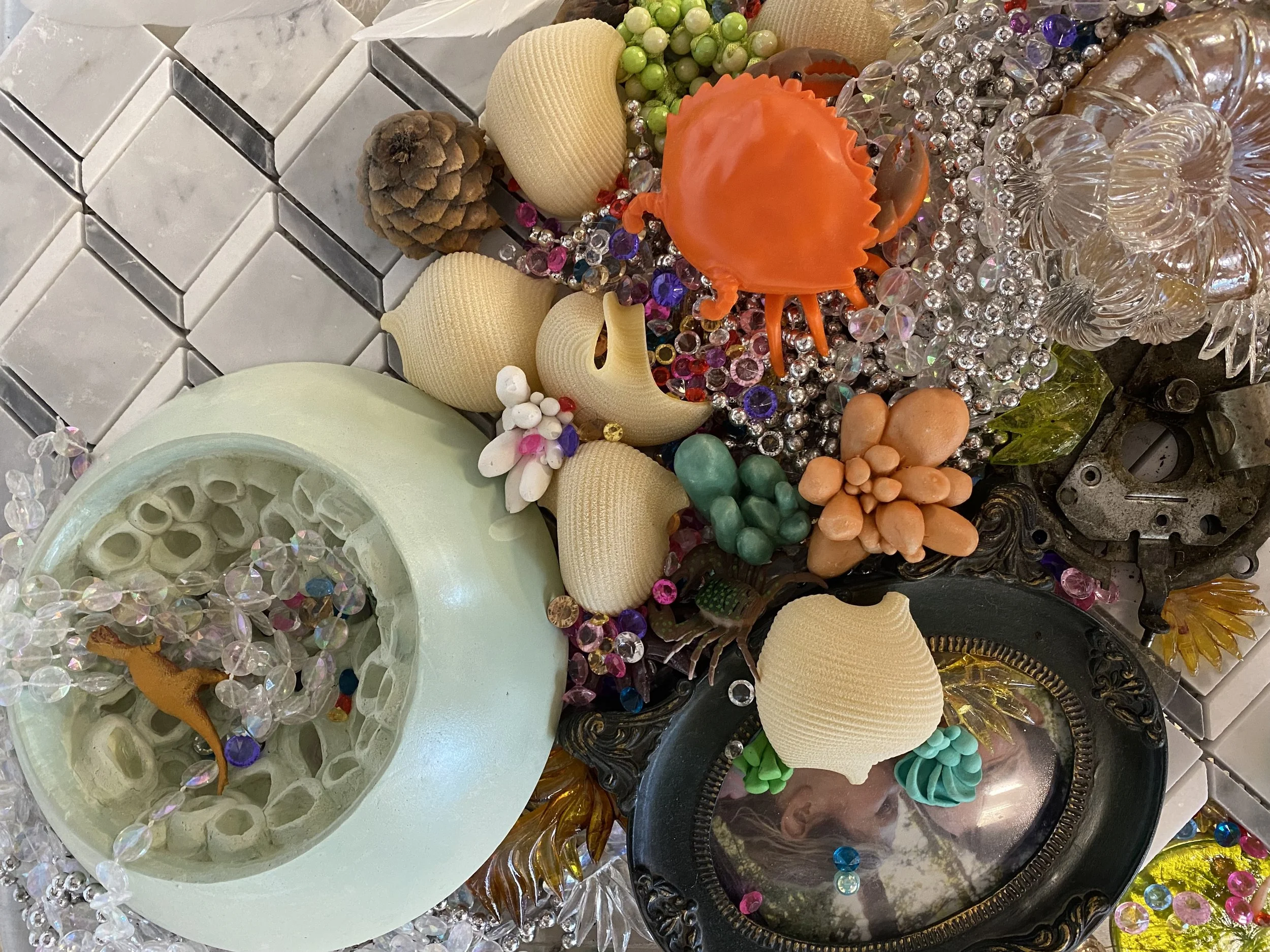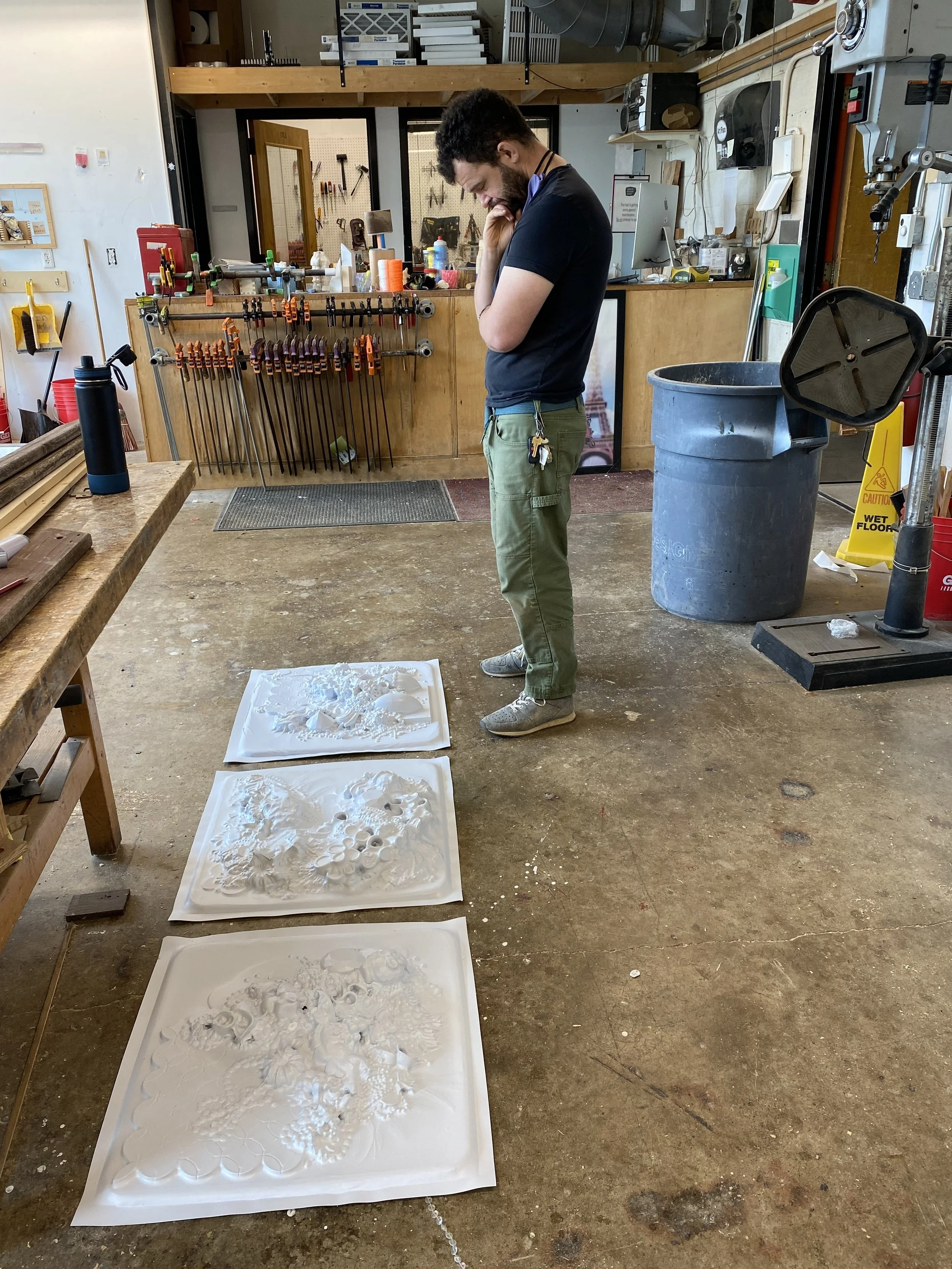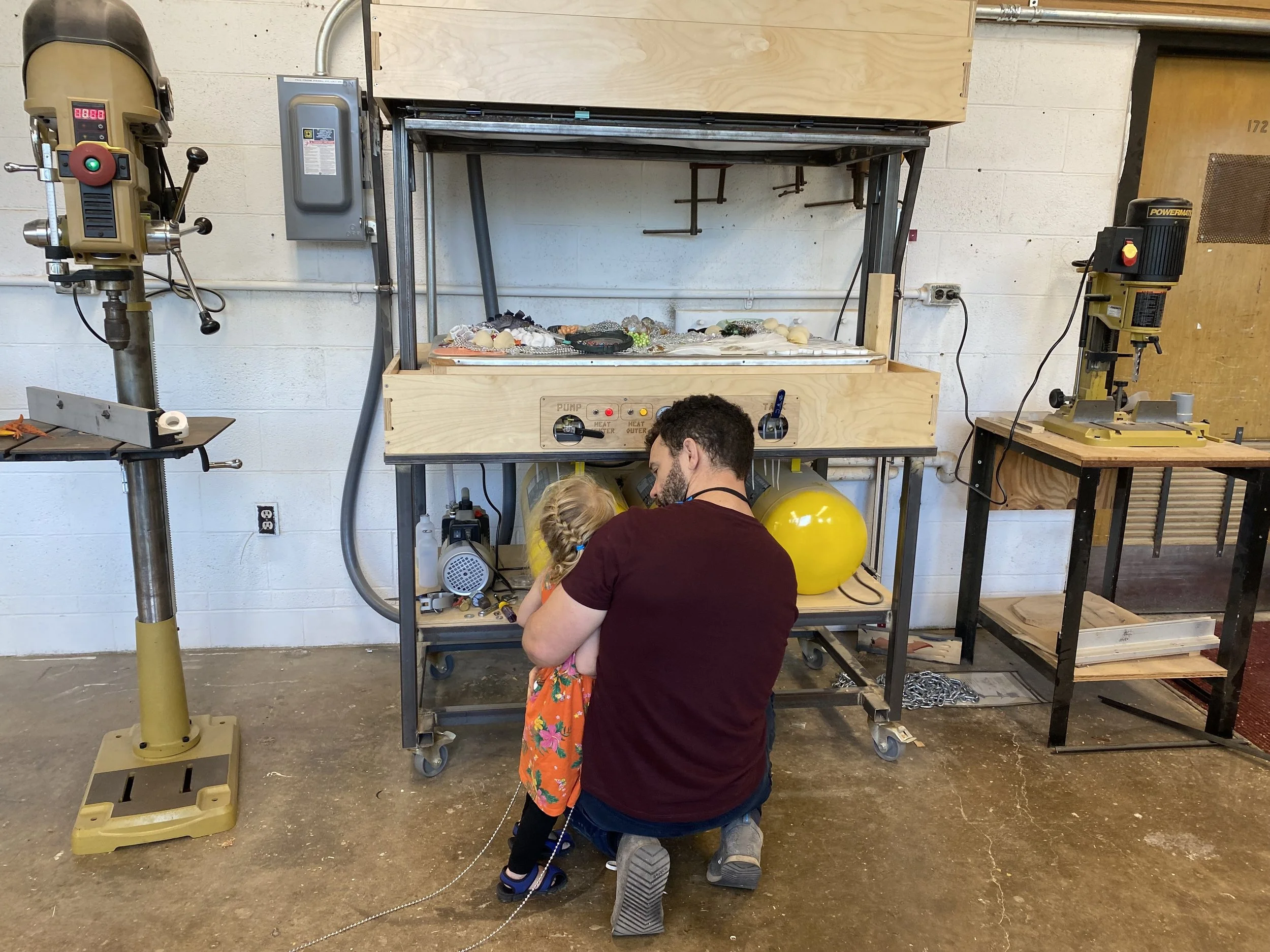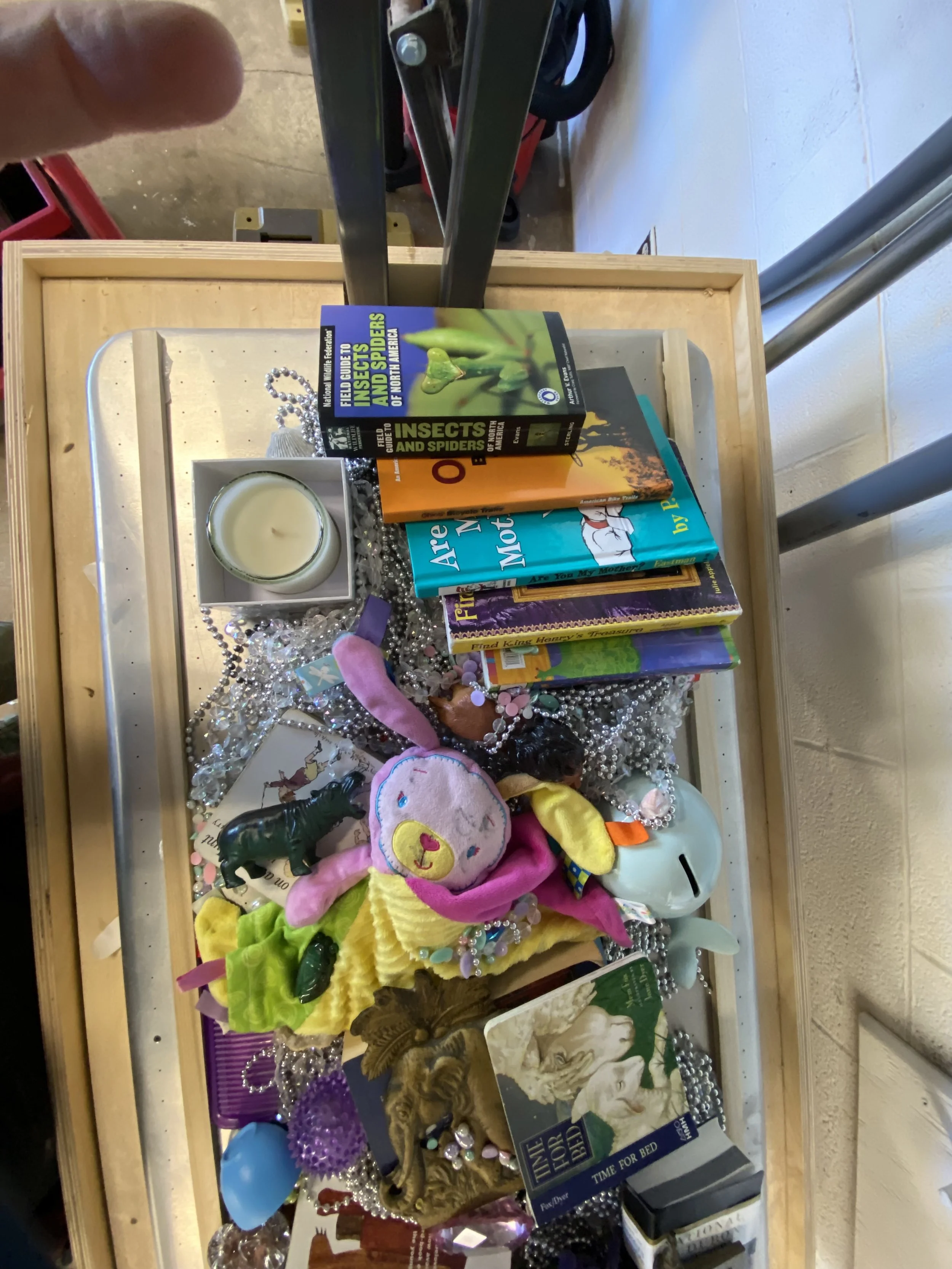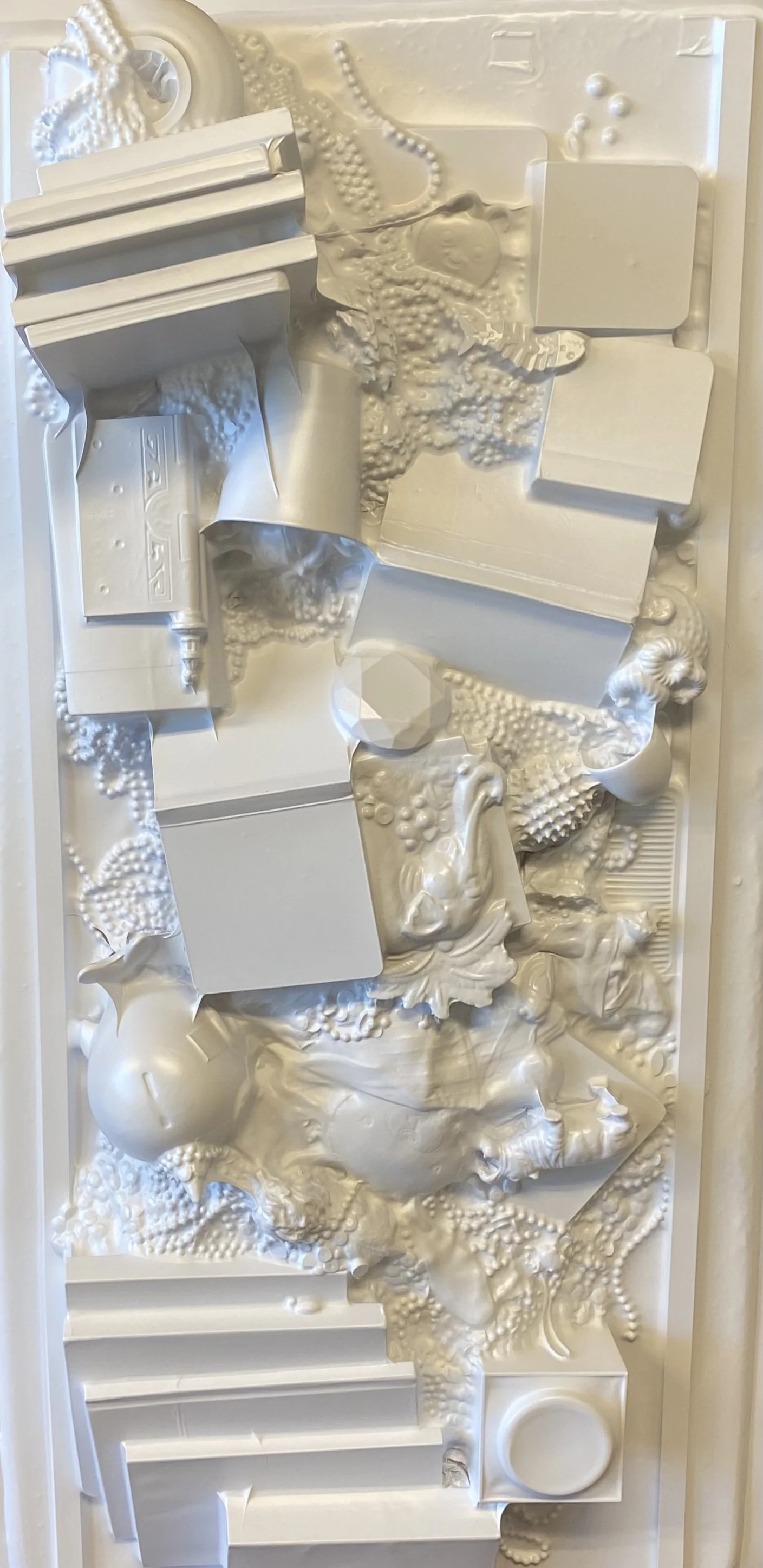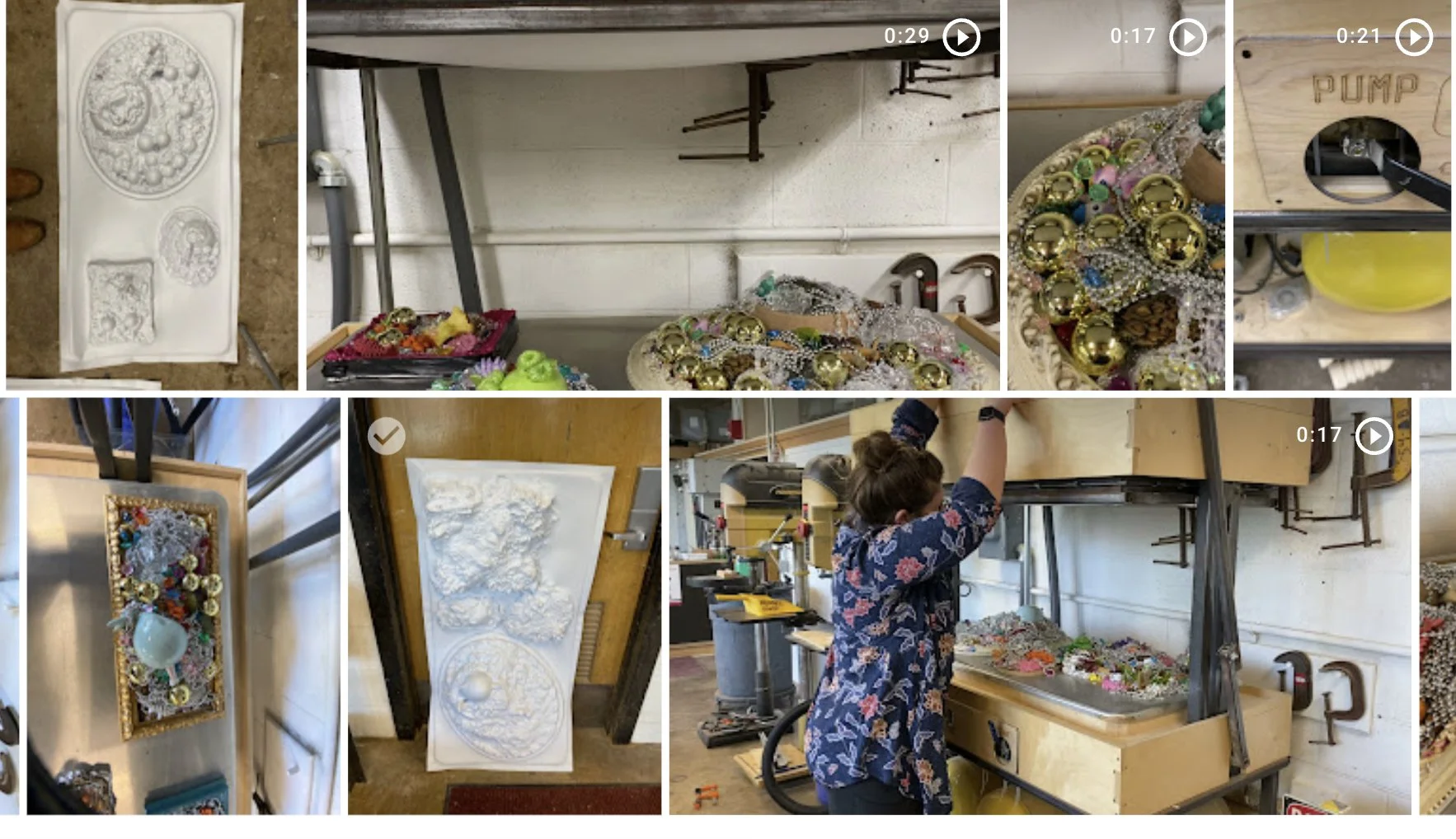Transformative Motherscholarship, 2024
Featured chapter “Existential Byproducts”, as part of the book: Transformative Motherscholarship and Art: Public Pedagogies of Childhood by editors G. Badoni, S. Cinquemani, E. Garber, & M. McClure (in copy editing). Bloomsbury.
Byproduct Studios, f. 2017, is the collaborative practice of Molly Jo Burke and Nathan Gorgen, married artist/designers based in Cincinnati, Ohio. Their work explores domestic life and space through the use of unused or discarded artifacts and materials generated by their children, home renovations, individual practices, and collections. Work created under the Byproduct Studios name has been shown nationwide, including at the Columbus Museum of Art, Illinois Wesleyan University, Furman University, The Ohio State University. Their most recent project, Vanity Vanitas, was part of the prestigious Momentum Intersection 2023 exhibition at the Toledo Museum of Art.
Our collaborative work focuses on the use of excess materials from our daily lives, artistic practices, and surrounding natural and built environments to create “semi functional” artwork that recalls domestic objects like tableware and furniture, or references to the architectural spaces that we inhabit. Of particular interest to us are materials that are or appear to be soft and malleable, that do, or seem to, slump, stretch, flow, drip and squish. These qualities are shared with the human body and lend an organic or biological character to the work. We enjoy contrasting these bodily materials with rigid surfaces. The result are whimsical creations that are chaotic, joyful, and curious, challenging our audience to reconsider the environments and objects we encounter daily.
When we use the excess material left behind by our respective processes to create our collaborative works, or incorporate objects collected from family life, such as unused children’s items and leftover components from home improvement projects, the result is imaginative recycling and repurposing of substances for roles that they do not normally fill. This not only allows us to address our own “waste stream,” but also to harness the frisson of an encounter with a not-quite-identifiable object. A variety of coatings, such as plaster, wax, epoxy, and faux painting may also be applied to the materials to either heighten or obscure their innate qualities. This allows us to play with perceptions of a material’s purpose, quality and value, as waste material and the byproducts of our lives are transformed through the process.
In 2017, when our first child was a year old, we began an intentional artistic collaboration. While we had influenced, edited and assisted with one another’s work in the past, ultimate ownership and responsibility for any given work belonged to one or the other of us. In our new lives as parents, separate practices seemed like a luxury we could no longer afford. It is unfortunately true that being a traditional artist requires time, commitment, and an understanding on the part of those in your life that you must periodically ensconce yourself alone in the studio. As new parents working full-time jobs and trying to maintain an equitable relationship, we found this mode of working impossible. Instead, we decided to combine our efforts, doubling what little time we had, motivating each other, and sharing responsibility for the work so that neither of us felt left out.
Since then, our collaboration has undergone some tactical changes although the strategy has remained consistent. We began with a rigid set of rules and schedules that allowed us to divide labor and stay on task, which have relaxed as we have become more comfortable with one another’s working styles. Removing some of our original guardrails has led to more creative conflict at times, but it has also improved our spontaneity and the speed at which we can create work, which is crucial as we have even less time for art after the birth of our second child in 2019. Our work has also become less focused on the leftovers of our respective practices and more focused on the materiality of our home life, especially as our children have grown and gained agency. Their discarded possessions, aesthetic decisions, and energy have provided much of the physical and conceptual material for our most recent work, and they have, in a way, become our collaborators as well.
Ultimately, as workers and parents, we cannot put our lives on hold for the studio. Therefore, in order to maintain an artistic practice, we have to merge the two completely. Fortunately for us this combining is part of a progression, first combining our lives as partners, and then combining with our children as a family, then as artistic collaborators, and finally as the amalgamation of home, work, art, and family that is our current life.
P. Gorgen skipping through the exhibition before de-install of Existential Byproduct, 2020
Existential Byproducts and Domesticity
In January of 2020, we were featured in an exhibition at Illinois Wesleyan University. We traveled 6 hours in winter storms with our 12 month old daughter to install the show. We were welcomed to the space by Carmen Lozar, a curator, gallery director, artist, and mother. Carmen and the gallery interns helped us layout and install artwork over the next 24 hours before we did a marathon drive home. In March of 2020, one week before COVID-19 pandemic stay at home orders were issued, we returned (with both our children) to de-install and take the work back home. The photos featured here are of the melding that occurs as an artist parent, folding children into the activities that you must accomplish. We believe that you can see the influence of that inclusion in our artwork.
Found object stuck in vacuum formed polystyrene before we removed it. The plastic cradles the child’s piggy bank in a pillowing manner. Work in progress image. 2021
PS Series - Working/Parenting in Progress
As parents observing your children engaged in imaginative play, or even just the way that they engage with objects, is fascinating. Our children for long periods of time called everything they assembled a sculpture (and currently still do). It was interesting to observe the freedom of their actions, that they wanted to engage in making as they saw us making, but their possibilities were endless because they did not hesitate over right and wrong. All the items before them were available to be a part of the artwork.
We were compelled to incorporate more of our lives into the artworks just as our children were doing with their sculptures. This led to a series of vacuum-formed works that we consider to be portraits, a way of documenting our lives - artfully, dimensionally.
PS Series Process documentation, 2022
Process videos
While making the vacuum formed works there is a bit of magic. The polystyrene is heated until it slumps into a gentle beautiful belly shape, and then it is draped over the arrangement of objects on the vacuum former table. With a pull of a few levers the pump sucks the air from the space between the objects and the polystyrene. The plastic sheet cools quickly and encases a perfect impression of the objects beneath it.
While the arrangements seem chaotic, there is in fact careful consideration of where objects are placed, what depth the voids have, and how much space is between. We add little bits of cushion and filler, sometimes it is hidden, sometimes it is actually another object. In many ways this is what it is like to function with a toddler or small child. There are carefully navigated shifts to the schedule, or a structure that supports the day to be completed, whether it is a handful of snacks stored in various places in the house, car, or backpack. Pulling out the water bottle just when someone is appearing cranky. Shifting the activity to keep the mood light, so that you can make it through to dinner. Or knowing that perfect song to sing at just the right moment before bedtime. Intuition and knowledge pieced together allow us to construct successful arrangements of our vacuum formed reliefs, and navigate parenting. We work as a team to our strengths.
You can find videos of the pieces being created through the links below. If you listen, you can often hear our kids talking to us or each other while we are in the studio - although be aware the shop noise is also quite loud.
